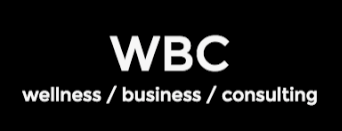Team bonding is made of more than water-cooler conversations and birthday cake in the break room. Moving these efforts beyond the office walls can help enrich relationships between teammates and foster a true sense of togetherness.
Whether it’s the more traditional retreat or company lunch or a more innovative idea such as an escape room or golf outing, these 12 entrepreneurs have got the right idea when it comes to successful team-building activities.
A. Volunteer Work Together
When our company volunteers together it creates a positive, intimate space for bonding over our shared values and goals. It feels amazing to interact with the community, and we come home feeling great that at the end of the day, we made an impact. - Rachel Beider, Massage Greenpoint, Massage Williamsburg
A. Simple, Fun Activities
I try to pick activities where my employees can participate in a competitive activity or sit out the competition and just have fun together — something like a rock climbing wall/bar (seriously, they’re out there) where some can engage in something challenging and some can just kick back and have fun. That way, no one feels any pressure and everyone has a good time. - Kevin Conner, BroadbandSearch
A. Happy Hour
My startup was purchased by a major software design company last year. Fortunately, this came with many perks. Our parent company throws happy hour parties every month with live entertainment, great food and friends and family. This is a great way for the team to meet new people we coordinate with on different marketing strategies and it ultimately brings us closer together. - Kristopher Jones, LSEO.com
A. Escape Rooms
Escape rooms are a fantastic bonding experience for teams. It’s all about teamwork and problem solving, a fantastic combination for team bonding. They’re usually built for a few people, so it depends on the size of your team. - Ben Lang, Spoke
A. Company Retreats
Since we are a fully remote team, each year we host a company retreat. It’s the only time that everyone from the company is together in one location. This year we went to Orlando. We attended workshops, brainstormed and collaborated on new ideas. - Syed Balkhi, OptinMonster
A. Competitive Activities
It could be bowling, kart racing or a 5K race, but if it’s competitive or allows us to compete against each other on a team or individual level, it creates camaraderie and understanding of each other’s strengths. It’s fun and so different than our regular work environment. - Drew Hendricks, Buttercup
A. Company Lunches
At the end of our first summer, when soliciting feedback from interns during exit interviews, a then-intern suggested we take small groups of interns out to lunch to get to know each intern in an informal setting. We have extended the tradition to employees and at these lunches, we only discuss work-related topics within the context of inside jokes. These lunches build cohesion and are fun for all. - Adam Mendler, Custom Tobacco
A. Dream Day
One of the best days my team ever had was when I asked them to make a list of their “dream day” in our community and then we attempted to do as many of the things on the list as possible. We had drive time between activities to be able to talk and we had distributed ownership of the day because ideas came from everyone. - Hugh Weber, Institute of Possibility
A. Camping
Nothing brings teams together like spending 24 hours together having fun. Camping is an inexpensive and highly effective way of bringing teams together. Team members will start building a rapport with each other as a result of spending full days together. Think of how summer camps make long-lasting friendships. Soon, your employees will be writing home to say they don’t want to come back. - Diego Orjuela, Cables & Sensors
A. Activities Fitting Your Culture
Activities that closely fit your company culture are the best. As an outdoor company, we go hiking, skiing, climbing and mountain biking together throughout the year depending on the season. It’s a great way to get out of the office and helps build a fun, enjoyable and authentic team environment. - Brint Markle, Mountain Hub
A. Employee Family Cookouts
We have cookouts with bounce houses and other children’s activities so that our employees can bring their families. We find that when our employees’ families hang out together it grows the bond between them, which leads to a better work environment. Our employees love it as well, because we are providing a fun activity for their kids that they likely wouldn’t be doing without us. - Scott Kacmarski, Reps Direct
A. Golf
A competitive round of 18 holes and a few beverages always unites the team. The best part about golf is that there is also a lot time to talk both business and pleasure. Golf also gives the team something to chatter about during the week, and is an occasion we all look forward to. - Chris Gronkowski, Ice Shaker










